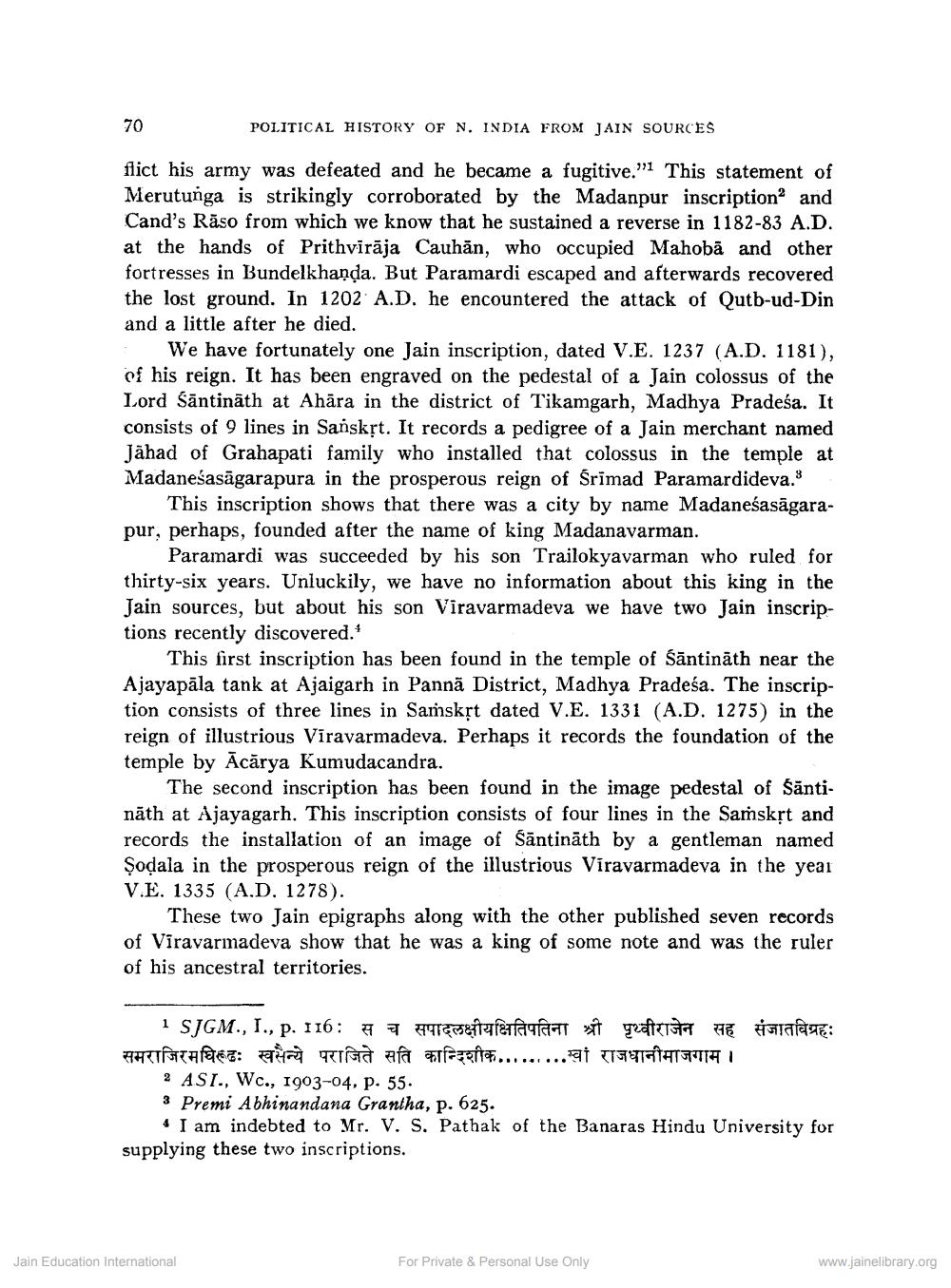________________
70
POLITICAL HISTORY OF N. INDIA FROM JAIN SOURCES
flict his army was defeated and he became a fugitive." This statement of Merutunga is strikingly corroborated by the Madanpur inscription and Cand's Rāso from which we know that he sustained a reverse in 1182-83 A.D. at the hands of Prithvirāja Cauhān, who occupied Mahobã and other fortresses in Bundelkhanda. But Paramardi escaped and afterwards recovered the lost ground. In 1202 A.D. he encountered the attack of Qutb-ud-Din and a little after he died.
We have fortunately one Jain inscription, dated V.E. 1237 (A.D. 1181), of his reign. It has been engraved on the pedestal of a Jain colossus of the Lord Säntināth at Ahära in the district of Tikamgarh, Madhya Pradeśa. It consists of 9 lines in Sanskst. It records a pedigree of a Jain merchant named Jāhad of Grahapati family who installed that colossus in the temple at Madaneśasāgarapura in the prosperous reign of Srimad Paramardideva.
This inscription shows that there was a city by name Madaneśasāgarapur, perhaps, founded after the name of king Madanavarman.
Paramardi was succeeded by his son Trailokyavarman who ruled for thirty-six years. Unluckily, we have no information about this king in the Jain sources, but about his son Viravarmadeva we have two Jain inscriptions recently discovered.
This first inscription has been found in the temple of Sāntināth near the Ajayapāla tank at Ajaigarh in Pannā District, Madhya Pradeśa. The inscription consists of three lines in Samskệt dated V.E. 1331 (A.D. 1275) in the reign of illustrious Vīravarmadeva. Perhaps it records the foundation of the temple by Ācārya Kumudacandra.
The second inscription has been found in the image pedestal of Santināth at Ajayagarh. This inscription consists of four lines in the Saṁskřt and records the installation of an image of śāntināth by a gentleman named Sodala in the prosperous reign of the illustrious Viravarmadeva in the year V.E. 1335 (A.D. 1278).
These two Jain epigraphs along with the other published seven records of Viravarmadeva show that he was a king of some note and was the ruler of his ancestral territories.
1 SJGM., I., p. 116: 7 ITE Siterea la TT » grattista Tar: HTTTA ez: a Tisa afa af .......... 9 TETTHETIHI
2 ASI., Wc., 1903-04, p. 55. 3 Premi Abhinandana Grantha, p. 625.
4 I am indebted to Mr. V. S. Pathak of the Banaras Hindu University for supplying these two inscriptions.
Jain Education International
For Private & Personal Use Only
www.jainelibrary.org




